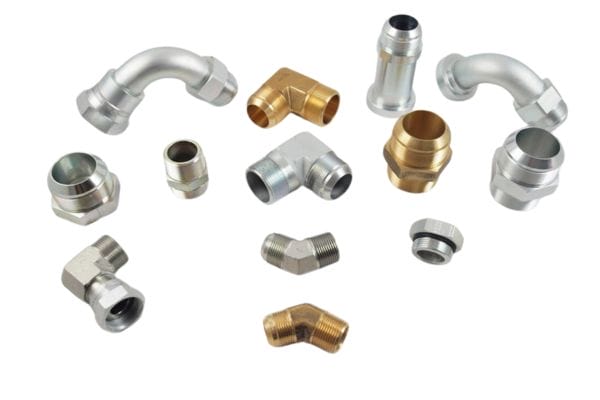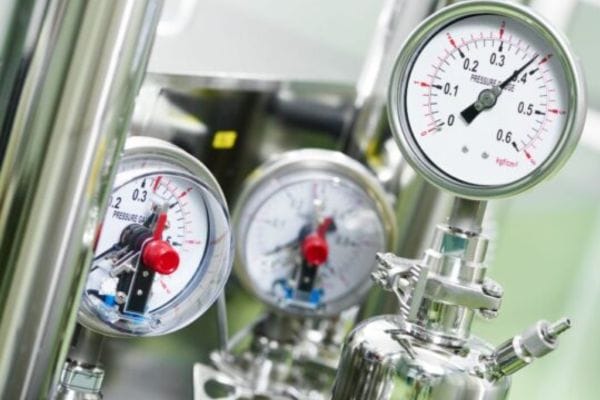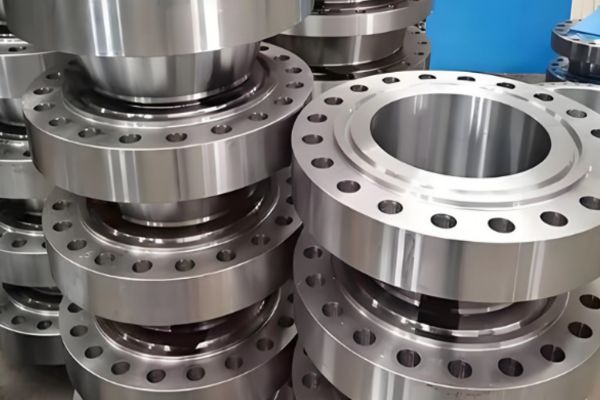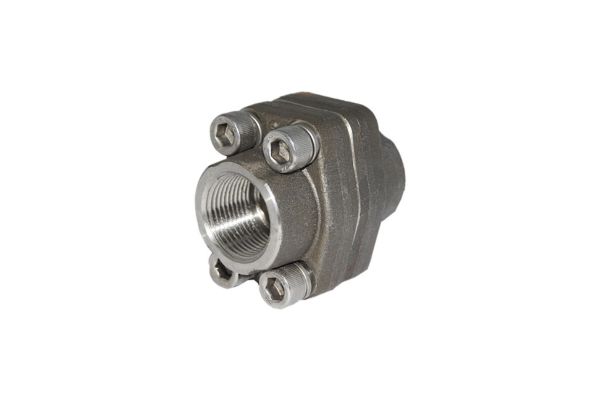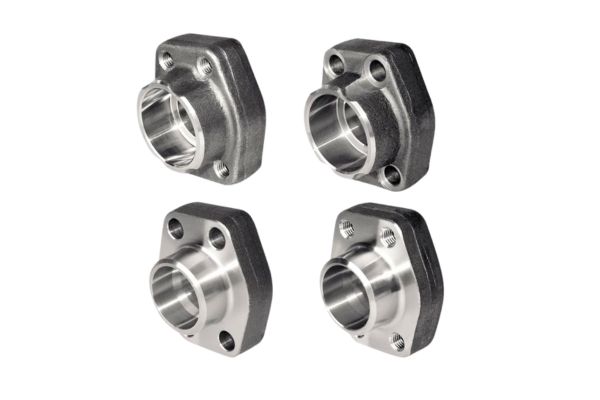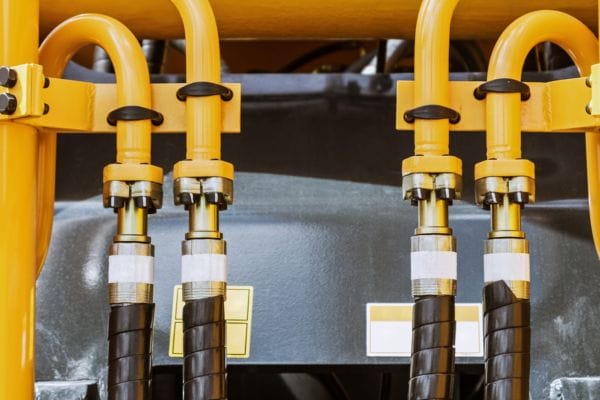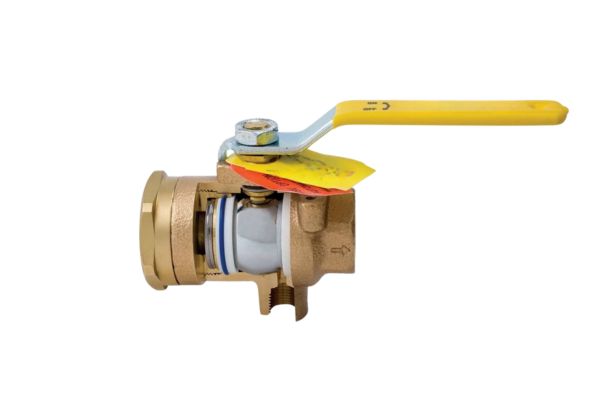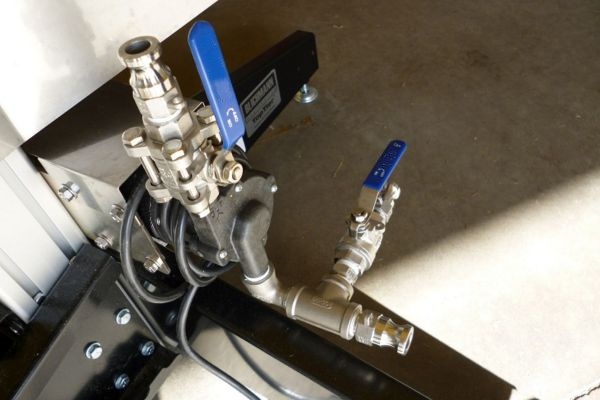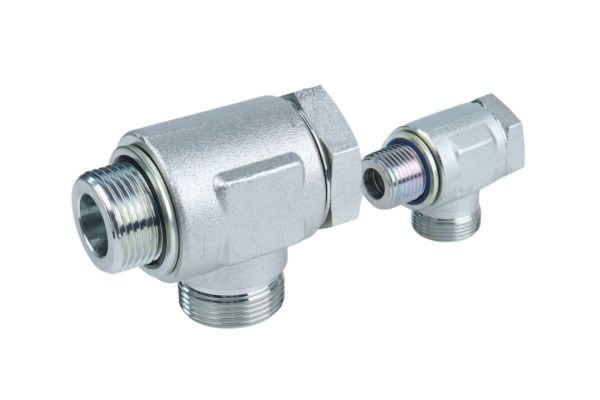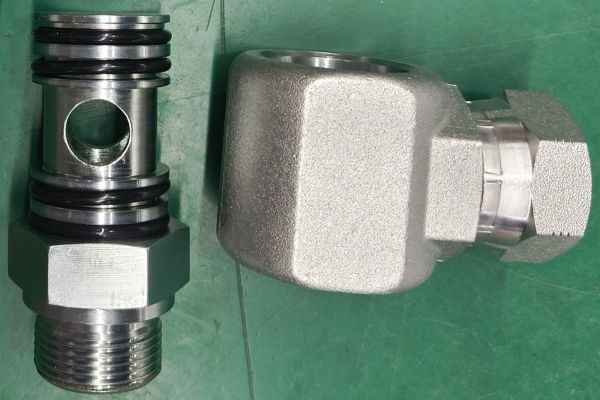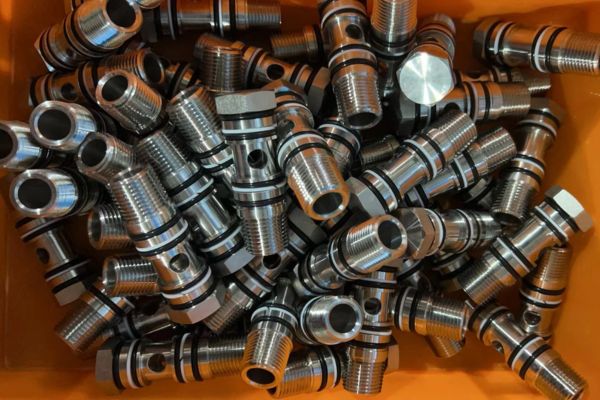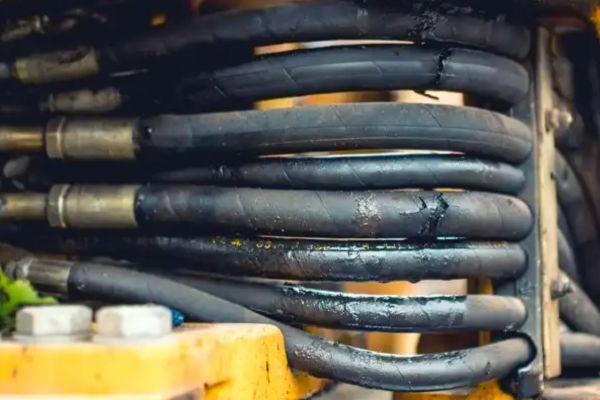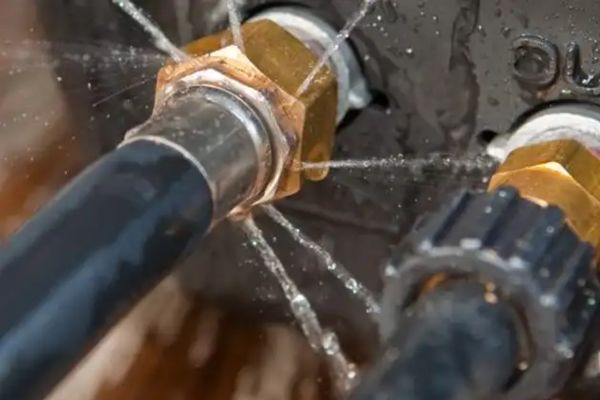Introduction
Global trade is once again facing significant disruption. In April 2025, the Trump administration announced a “reciprocal tariff” on goods imported from China, raising the total tariff rate on Chinese goods to 54%. In response, the Chinese government announced on April 4 that it would impose an additional 34% tariff on all U.S.-origin imports.
These policy changes have far-reaching consequences on global trade flows, particularly for industries reliant on international supply chains. One such industry is the hydraulic products sector, which now faces unprecedented challenges.
This article aims to provide clients in the hydraulic industry with a detailed breakdown of the latest tariff policies, an analysis of their potential impact, and practical response strategies. Understanding these tariff developments is essential for making sound business decisions, whether you are a hydraulic product manufacturer, distributor, or end user.
Background: U.S.–China Trade Relations and Tariff Developments
Overview of U.S.–China Trade Relations
As the two largest economies in the world, the U.S. and China have long played critical roles in global trade. However, their relationship has seen significant tension in recent years. Since the initial trade disputes in 2018, both sides have repeatedly imposed retaliatory tariffs, increasing trade costs and disrupting supply chains. Although a Phase One trade deal was signed in early 2020, the core tariff structure remained largely unchanged.
The Latest Round of Tariff Changes
In April 2025, the trade dynamic between the two countries entered a new phase:
- U.S. Policy: On April 2, 2025, the Trump administration announced a “baseline tariff” of 10% on all imports entering the U.S., effective April 5. For “high-risk countries” such as China, a 34% additional tariff was introduced effective April 9, bringing the total tariff on Chinese goods to at least 54%, including existing tariffs.
- China’s Countermeasures: On April 4, 2025, the Chinese government announced a 34% additional tariff on all U.S.-origin goods, on top of current rates. This countermeasure takes effect at 12:01 PM on April 10, 2025.
These developments go beyond bilateral relations, triggering ripple effects across global manufacturing and logistics. The hydraulic product industry, which relies heavily on cross-border production and sourcing, is significantly affected.
Tariff Policy Breakdown
Overview of Tariff Adjustments
U.S. Tariff Measures on Chinese Goods (as of April 7, 2025)
- Baseline Import Tariff: Effective April 5, 2025, the U.S. imposes a 10% universal import tariff on all incoming goods.
- Country-Specific Tariff Adjustment: Effective April 9, 2025, the U.S. imposes a 34% additional tariff on imports from countries with large trade deficits, primarily targeting Chinese products. This brings the total tariff on Chinese goods to approximately 44%–54%, depending on the product category and pre-existing tariffs.
- Termination of De Minimis Exemptions: Starting May 2, 2025, the U.S. cancels the duty-free treatment for parcels under $800 from China and Hong Kong. A 30% tariff or $25 per item (whichever is higher) now applies to low-value shipments.
China’s Retaliatory Tariff Policy
As a response, China’s Customs Tariff Commission announced the following on April 4, 2025:
- A 34% additional tariff will be applied to all U.S.-origin goods, in addition to existing duties.
- The policy takes effect at 12:01 PM on April 10, 2025.
- Existing bonded zones, tariff exemption policies, and relief programs remain unchanged.
- A transition period is granted: Shipments that depart before April 10 and arrive between April 10 and May 13 will not be subject to the new tariff.
Tariff Impact on Hydraulic Products
HS Codes for Key Hydraulic Components
- Hydraulic Fittings
- HS Code: 7307990000
- Description: Connectors used in hydraulic systems, such as fittings for pumps, cylinders, and motors.
- Hydraulic Hoses
- HS Code: 4009210000
- Description: Reinforced rubber hoses used in hydraulic power transmission, often with textile or wire braiding.
- Hose Clamps
- HS Code: 7326909000
- Description: Steel or iron clamps used to secure or support hydraulic hose assemblies and pipework.
Tariff Implementation Timeline
| Date | Policy Event |
| April 5, 2025 | U.S. imposes 10% baseline tariff on all imports |
| April 9, 2025 | U.S. imposes 34% additional tariff on Chinese goods; total tariffs reach 54% |
| April 10, 2025 | China imposes 34% retaliatory tariff on all U.S.-origin goods |
| May 13, 2025 (24:00) | End of China’s tariff transition period |
Impact Analysis of Tariffs on the Hydraulic Products Industry
Overall Industry Impact
Changes in Cost Structure
The new round of tariff policies has significantly impacted the cost structure of the hydraulic products industry:
Increased production costs:
- Higher tariffs lead to increased prices for production equipment and components, raising capital expenditure.
- To cope with tariffs, companies may need to restructure production lines or adjust manufacturing processes, resulting in additional transformation costs.
- Adjusting and diversifying the supply chain requires substantial resource investment, increasing short-term operating expenses.
Rising product prices:
- Hydraulic product manufacturers face increasing cost pressure, and part of this may be passed on to customers.
- According to market research, around 60% of hydraulic product manufacturers have chosen to pass on part of the tariff burden, resulting in a 15%–25% price increase for end products.
- Even products that do not directly use U.S.-origin materials may become more expensive due to global supply chain linkages.
Increased price volatility:
- The uncertainty of tariff policies leads to unstable market expectations and more frequent price fluctuations.
- Suppliers may adjust quotations frequently, making procurement budget management more difficult.
- Pricing clauses in long-term contracts may need to be renegotiated, increasing transaction costs.
Changes in total cost of ownership:
- In addition to rising product prices, after-sales service costs such as maintenance and spare parts may also increase.
- Supply chain adjustments may lead to longer delivery cycles, increasing inventory holding costs.
- The range of available product options may shrink, affecting the ability to choose optimal cost-performance products.
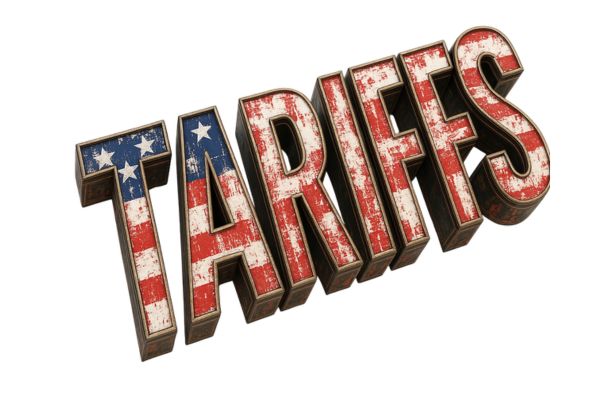
Market Demand Changes
Tariff policies have had multiple impacts on the demand for hydraulic products:
Hindered export business:
- Chinese hydraulic product exports to the U.S. market face tariffs of up to 64%, significantly weakening price competitiveness.
- U.S. hydraulic product exports to the Chinese market face 44% tariffs, similarly losing pricing advantages.
- According to industry data, trade volumes of hydraulic products between China and the U.S. may drop by 40%–50% following the implementation of tariffs.
Changes in end-user demand:
- Rising prices of hydraulic products increase costs in downstream industries, potentially reducing order volumes or delaying equipment upgrades.
- Industries such as construction machinery and agricultural equipment may experience fluctuating demand for hydraulic products.
- Customers are paying more attention to cost-performance and are more open to domestic substitute products.
Specific Challenges Faced by Enterprises
Why Is It Also Difficult for Hydraulic Product Manufacturers Under Tariff Policies?
Many customers may raise questions such as:
- “You’re the factory — why are you affected by the tariff hikes?”
- “I’m the one paying the tariff, so why are your prices changing?”
- “It used to take three weeks to deliver — why does it now take five?”
These are fair questions. But to understand the situation, you need to look at it from the manufacturer’s perspective and see the real difficulties they face under the tariff increases. The following are typical problems that Chinese hydraulic manufacturers encounter in response to U.S. tariff hikes:
Even Low Unit Prices Can’t Withstand High Tariff Pressure
Factory prices are already low, as hydraulic products are standardized industrial components with narrow profit margins. When U.S. importers face tariffs of 30% or more, they try to negotiate lower prices from Chinese suppliers, adding to the manufacturer’s burden.
- Raw material prices are rising;
- Labor costs are increasing;
- Energy and packaging expenses are going up;
- Customers are still asking for discounts — creating a double squeeze.
For example, the standard factory price of a hydraulic fitting is $2.00. The customer wants it lowered to $1.85 to offset tariffs. But the actual production cost is already at or near that amount. Long-term price pressure may lead to losses or force manufacturers to cut corners on materials and processes — which compromises quality. Most reputable manufacturers would rather lose an order than sacrifice product integrity.
Decreased Orders from Customers Disrupt Factory Efficiency
After the tariff increases, many customers are holding off or placing smaller orders. For manufacturers, this scattered and last-minute ordering model is difficult to manage.
- Production plans are inconsistent, and lines must constantly switch;
- Low volume makes it hard to bulk-purchase materials, raising costs;
- Staff scheduling becomes unstable — some days require overtime, others see downtime;
- Factories are hesitant to stock inventory for fear of tying up capital.
The result: Products that used to ship stably now need scheduling. Deliveries that once took 15 days now take 30. Customers feel delays, but the real issue is unstable ordering — the factory simply can’t maintain consistent production.
Export Documentation Gets More Complex, With Heavier Compliance Requirements
With higher tariffs come stricter customs checks on export documentation.
- Products must be classified accurately, with detailed descriptions of functions and structures;
- All items must include authentic, compliant Certificates of Origin (CO);
- If the customer uses factory info for customs clearance, the factory must also provide extra documents such as material reports and packing lists.
Previously, shipments could go out within a day. Now, it may take 2–3 days (or longer) just to prepare documents and wait for customs approval. For customers, these delays are not due to slow factories, but to new compliance requirements making the process longer.
Shipping Costs Stay High, Packaging Costs Keep Climbing, Margins Shrink Further
Ocean freight rates have fluctuated wildly in recent years. Even though they’ve eased slightly, they’re still high. Meanwhile, packaging and labeling costs are rising:
- Cartons, pallets, woven bags, and labels all cost more;
- Customers expect prices to fall;
- Ocean freight hasn’t fully recovered;
- Export packaging standards are stricter, raising per-unit handling costs;
- Small batch orders often require split labeling and custom packing — increasing labor.
In this environment, manufacturers have little to no margin. They may continue fulfilling orders to maintain relationships, but the model is unsustainable. In the long run, quality suppliers may be forced to leave the U.S. market.
Refusing Fake Origin Labels Results in Losing Some Customers
Some customers suggest using alternative country-of-origin labels or routing through third countries to avoid tariffs. But legitimate factories, for the sake of compliance, brand integrity, and customer responsibility, refuse to take part in such practices.
Consequences:
- Some customers turn to trading companies offering “workaround” services;
- Others get shipments held at U.S. customs due to incorrect origin labeling or failed routing — and end up returning to compliant factories.
Manufacturers are not incapable of such workarounds — but they understand the risks. Violations can affect customs clearance, lead to penalties, and get both customer and supplier blacklisted. To protect both sides, they would rather decline risky orders than chase short-term profits.
Resources Get Diverted, R&D and Services Are Delayed
To handle tariffs, prepare documents, and coordinate pricing, factories must divert resources from product development and service delivery.
- Automation plans are delayed;
- New product development is paused;
- After-sales teams are pulled to assist with customs documentation or quality reports;
- Engineers spend time negotiating prices instead of supporting technical questions.
The result: Customers may feel slower response times and weaker support — but in reality, manufacturers are doing their best while overwhelmed by external pressures.
Specific Problems and Challenges Faced by Customers
(For buyers of hydraulic fittings, hoses, quick couplings, clamps, and related hydraulic system components)
Following the U.S. tariff hikes on Chinese-manufactured hydraulic products, many buyers, distributors, equipment manufacturers, and service providers have begun experiencing both visible and hidden pressures. The following are the most common challenges encountered in actual procurement scenarios:
Rising costs make pricing difficult to maintain
- A 25%–35% increase in tariffs at customs significantly raises the landed cost.
- Buyers either absorb the tax themselves or pass it on downstream—both options carry resistance.
- Previously profitable contract bids are now at risk, with some even facing losses.
Unstable delivery timelines affect project scheduling
- Customs clearance has become more complex; some products are delayed due to HS code classification disputes or origin certificate verification.
- Rising logistics costs and fragmented orders reduce shipping efficiency.
Increased risk of part shortages
- Standard components can still be grouped into consolidated shipments, but custom or non-standard parts face longer lead times.
- A single missing part can stall an entire machine or production line.
- Finding replacement parts can be technically challenging, with risks like leakage or incompatibility.

Balancing inventory becomes harder—overstocking vs. stockouts
- Excess inventory ties up capital; too little inventory leads to urgent stockouts.
- Uncertainty around tariff policy discourages long-term planning.
- Lack of stable suppliers makes demand forecasting and planning more difficult.
Internal coordination becomes strained, procurement costs hard to estimate
- Uncertainty over which products are affected and by how much causes confusion across finance, sales, and procurement teams.
- Total post-tariff landed cost is hard to predict, making quoting and project planning more cautious and delayed.
- Longer evaluation cycles impact responsiveness and customer satisfaction.
Compliance risks increase—uncertainty over routing and documentation
- Third-country routing, false country-of-origin declarations, and similar “evasion tactics” carry high compliance risks.
- If customs identifies misdeclared origin, entire shipments may be detained, heavily fined, or even banned.
- Compliant suppliers cost more; risky suppliers come with legal exposure—leaving buyers stuck choosing between cost and safety.
More complex project cooperation—higher expectations for partners
- Buyers now expect suppliers to provide not only products, but also tariff policy knowledge and compliance support.
- Some smaller factories or trading firms can’t provide required export documentation, causing disruption.
- Reliable suppliers must now offer a combination of price, compliance, responsiveness, and product expertise.
Strategic Responses for Hydraulic Product Buyers
Procurement Strategy Optimization
To cope with tariff-related challenges, buyers can consider the following adjustments:
Supplier diversification
- Evaluate the exposure of current suppliers to tariff risks and identify weak points.
- Actively source alternative suppliers less affected by tariffs—such as Topa’s stable production network.
- Build a diversified supplier base to avoid over-reliance on a single region or company.
Contract term optimization
- Add tariff adjustment clauses in new contracts to share risk more fairly.
- Consider long-term supply agreements to lock in favorable prices.
- Form strategic partnerships with core suppliers to jointly navigate market volatility.
Procurement timing
- Closely monitor tariff policy developments to identify optimal purchasing windows.
- Increase strategic purchasing before tariff changes take effect.
- Take advantage of any grace periods to plan bulk purchases or buffer inventory.
Inventory Management Optimization
Effective inventory planning can help mitigate tariff-driven risks:
Adjust inventory levels
- Increase safety stock for key hydraulic components to buffer against disruptions.
- Apply tiered inventory strategies based on product criticality.
- Regularly assess the balance between inventory holding cost and supply risk.
Improve demand forecasting
- Enhance forecasting accuracy to avoid shortages or excess inventory.
- Strengthen coordination with internal production and sales departments.
- Use data analytics tools to model different market scenarios and improve accuracy.
Inventory visibility
- Implement real-time inventory monitoring systems to detect potential risks early.
- Improve transparency through supplier information sharing.
- Conduct regular inventory audits to ensure a healthy stock structure.
Product Selection and Usage Optimization
You can reduce the impact of tariffs through smarter product and usage strategies:
Product substitution analysis
- Assess the feasibility of switching to Topa products that are not subject to high tariffs.
- Compare the performance, quality, and total cost of ownership of alternative products.
- Choose the most cost-effective options without compromising technical requirements.
Equipment usage optimization
- Improve equipment maintenance to extend the service life of hydraulic systems.
- Optimize equipment usage schedules to improve utilization.
- Apply predictive maintenance to reduce unplanned downtime and emergency purchasing.
Standardization and modular design
- Promote standardization and modularization of hydraulic systems.
- Reduce use of non-standard parts to minimize dependency on specific suppliers.
- Simplify spare parts management and improve repair efficiency and cost control.
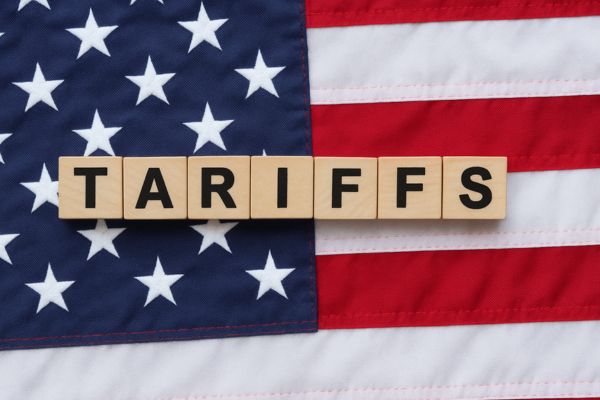
Supply Chain Risk Management
Building a robust supply chain risk management framework increases resilience:
Risk assessment and monitoring
- Regularly evaluate tariff exposure within your hydraulic product supply chain.
- Establish a monitoring mechanism for policy updates and market conditions.
- Develop a supplier risk rating system to flag and manage high-risk vendors.
Contingency planning
- Draft contingency plans for key products in case of supply disruptions.
- Identify backup suppliers and substitute product solutions.
- Create rapid response protocols to minimize downtime during emergencies.
Supplier relationship management
- Strengthen communication with core suppliers and share market updates.
- Develop strategic supplier partnerships to secure preferred access and priority support.
- Conduct regular performance reviews to optimize the supplier portfolio.
Risk Prevention Recommendations
Avoid illegal rerouting and mislabeling practices
- U.S. Customs has tightened checks on products routed through third countries but originally made in China.
- If caught, the importer may face steep fines, retroactive duties, or even criminal penalties.
- Stick with legitimate declarations and use authentic origin documentation and HS codes.
Maintain a compliance documentation archive
- Request suppliers to provide:
- Certificates of Origin (CO)
- Technical specification sheets
- Material test reports
- Production records
- These documents assist with smooth U.S. customs clearance and help improve internal procurement compliance.
Special Recommendations for Topa Product Customers
Specific Considerations for Topa Products
For Topa products that do not rely on imported raw materials, the overall situation is relatively more favorable. However, several key factors still require attention:
Relative Competitive Advantage:
- Topa products are not directly impacted by U.S. tariffs, offering a relative cost structure advantage.
- Compared to competitors that rely on U.S.-origin raw materials, price increases may be smaller.
- In the current tariff climate, Topa products may present a more cost-effective alternative.
Indirect Effects:
- Although Topa products do not use U.S.-origin raw materials, global supply chain interconnectivity can still cause indirect impacts.
- Shifts in the competitive landscape may influence overall pricing strategies.
- Global logistics adjustments may affect delivery timelines for all products, including Topa products.
Market Positioning Shifts:
- In a high-tariff environment, Topa’s market positioning may need to be adjusted.
- The widening price gap with heavily taxed products may alter customer purchasing standards.
- Product portfolios and service offerings may evolve in response to changing market demand.

Topa’s Recommendations
As a customer purchasing Topa products, you may consider the following special suggestions to take full advantage of the current situation:
Leverage Cost Advantage:
- Maximize Topa’s cost advantage in the current tariff environment.
- Consider increasing the share of Topa products in your procurement mix to reduce overall sourcing costs.
- Establish closer collaboration with Topa’s supplier network to secure more favorable purchasing conditions.
Ensure Supply Chain Stability:
- Confirm the stability of Topa’s supply chain and assess potential indirect tariff exposure.
- Understand the origin of raw materials and the geographical layout of production facilities to identify risk points.
- Develop a joint supply continuity plan with your supplier to ensure uninterrupted delivery.
Plan for Long-Term Partnership:
- Explore long-term strategic cooperation with Topa suppliers.
- Discuss shared strategies for responding to market fluctuations and maintaining mutual benefit.
- Participate in product development and improvement processes to ensure that evolving needs are consistently met.
Conclusion and Outlook
Long-Term Impact of Tariff Policy
High tariffs will have a lasting impact on the hydraulic products industry. They are reshaping cost structures, disrupting competitive dynamics, and accelerating the restructuring of global supply chains.
In the short term, companies will face rising costs and pressure on profit margins. In the long term, this environment may drive innovation, efficiency improvement, and regional supply chain diversification across the sector.
Industry Development Trends
- Regionalized Manufacturing: Hydraulic supply chains will become more localized, with “produce where you sell” becoming a stronger trend.
- Technological Independence: Countries will prioritize independent control over hydraulic technologies, driving increased investment in R&D and innovation.
- Digital Transformation: Digital technologies will play a greater role in the design, production, and service of hydraulic products, boosting industry-wide efficiency.
- Sustainable Development: Energy-efficient and environmentally friendly hydraulic products will gain more attention, becoming a key direction for future growth.
Final Recommendations
As a buyer of hydraulic products—particularly Topa products—we suggest:
Stay Alert:
- Closely monitor changes in tariff policy and overall market conditions.
- Regularly assess supply chain risk and adjust sourcing strategies in a timely manner.
- Maintain close communication with suppliers and share market intelligence.
Respond Flexibly:
- Build a flexible procurement and inventory management system to quickly adapt to change.
- Prepare multiple contingency plans in case of supply interruptions.
- Consider cost-effective alternatives, as long as they meet required quality and performance standards.
Plan for the Long Term:
- Integrate tariff-related considerations into your long-term procurement and equipment planning.
- Establish strategic partnerships with core suppliers to ensure long-term supply stability.
- Invest in equipment maintenance and efficiency improvements to reduce long-term operational costs.
While the evolving tariff landscape presents real challenges, these can be mitigated through smart procurement strategies, optimized inventory control, and strong supplier partnerships. With proactive planning, your business can continue to operate smoothly—even in times of uncertainty.
References
- Customs Tariff Commission of the State Council. (April 4, 2025). Announcement on Imposing Tariffs on U.S.-Origin Imports. Ministry of Finance of the People’s Republic of China. https://gss.mof.gov.cn/gzdt/zhengcefabu/202504/t20250404_3961451.htm
- BBC Chinese. (April 3, 2025). Trump’s “Tariff Nuke”: 10% Tariff on All Imports, 54% Total Rate on Chinese Goods.https://www.bbc.com/zhongwen/articles/c4g2z8vlr2yo/simp
- General Administration of Customs of China. (2025). HS Code Lookup System.https://www.hsbianma.com/Code/8412291000.html
- TransCustoms. (2025). China HS Code 8412210000 – Import Duty Rates.https://www.transcustoms.cn/China_Tariff.asp?HS_Code=8412210000
- Forward Pathway. (March 13, 2025). High Tariffs and Their Long-Term Impact on Global Manufacturing Supply Chains.https://www.forwardpathway.com/186559
- Hengli Hydraulic Co., Ltd. (August 31, 2021). Feasibility Report on Use of Proceeds from Non-Public Stock Offering. Shanghai Stock Exchange. http://www.sse.com.cn/disclosure/listedinfo/announcement/c/new/2021-09-01/601100_20210901_4_opWAUcpC.pdf
- China Hydraulics, Pneumatics & Seals Industry Association. (2024). China Hydraulic Industry Development Report.
- Office of the United States Trade Representative (USTR). (April 2025). U.S. Tariff Policy Announcement on Chinese Imports.
- China Machinery Industry Federation. (2024). China Machinery Industry Yearbook.
- Market Data Forecast. (2024). Global Hydraulic Products Market Research Report.















